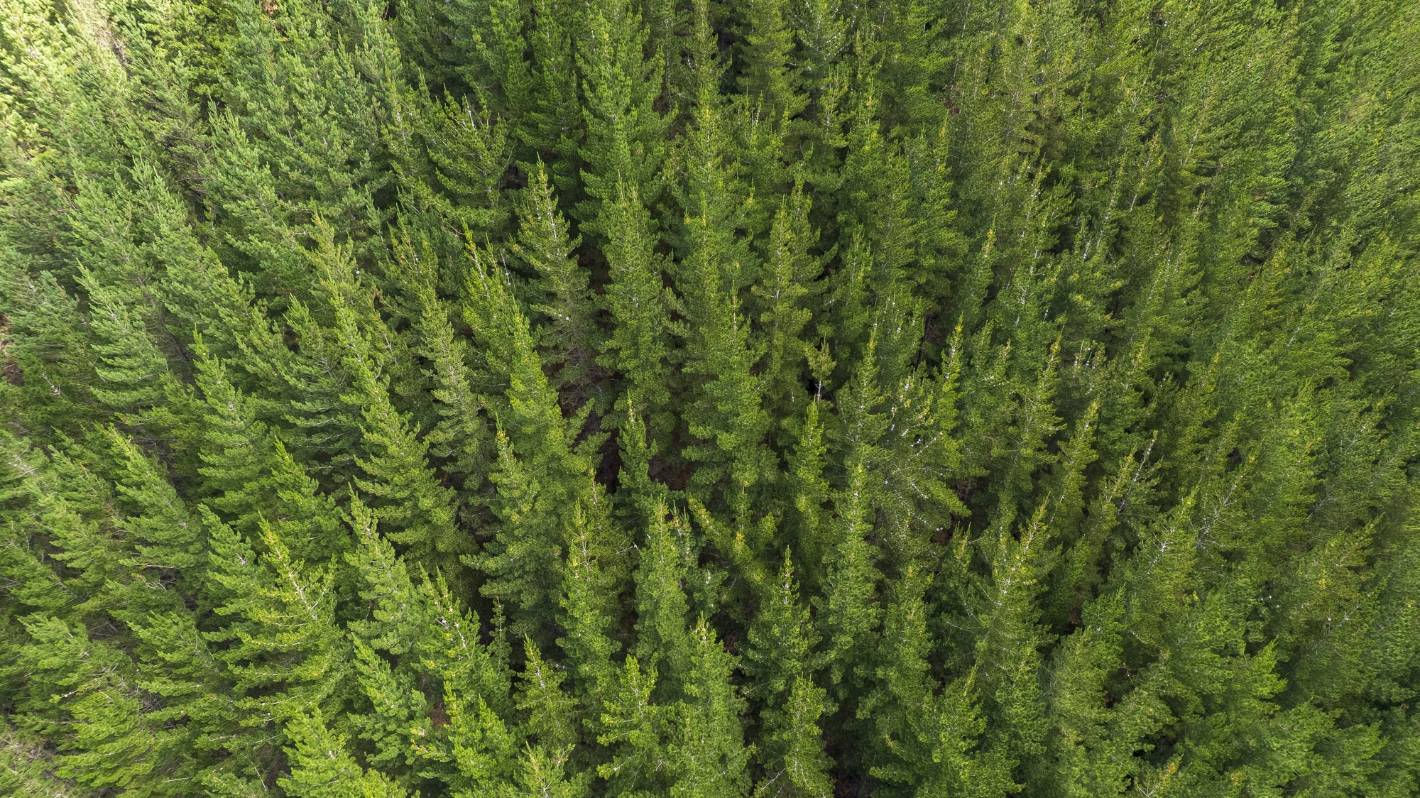A new study has found radiata pine trees are pervasively invading New Zealand’s natural ecosystems and more work is needed to stop them spreading.
The study suggested a levy on new non-native conifer plantations would help pay for the costs of managing invasions.
The researchers, led by Dr Peter Bellingham of Manaaki Whenua – Landcare Research, also suggested stricter regulation is needed to protect vulnerable ecosystems.
The study was done to test the commonly held theory that radiata pine is only a minor invasive species in New Zealand, as debate rages about whether the trees are a viable part of the Emissions Trading Scheme or should be cut down and replaced with natives.
READ MORE:
* Fears wilding pine issue has been underestimated, expert says
* Emissions Trading Scheme changes may stop ‘destruction of rural communities’
* NZ testing cheaper, more effective way to detect wilding pine infestations
* Wilding pines: Eternal vigilance needed, even with $100 million investment
The modelling showed up to 76% of New Zealand land is climatically capable of supporting pine trees, and data from the National Vegetation Survey showed the trees are growing far more widely than previously appreciated.
Radiata pine has mainly invaded grasslands and shrublands, but also some forests and at least three naturally uncommon ecosystems – geothermal, gumlands and inland cliffs – which are home to more rare species.
Andy MacDonald/Stuff
Radiata pine is the largest contributor to New Zealand’s forestry industry, comprising 90% of the total plantation, with exports contributing around 3% of GDP. (File photo)
Because of their rapid growth and flammability, the trees are likely to alter naturally uncommon ecosystem and drastically alter forest regeneration, the paper said.
Professor Euan Mason, from the New Zealand School of Forestry at the University of Canterbury, said the researchers did a good job identifying where radiata pine will grow and when it is a wilding problem.
“Ability to grow and ability to reproduce are not the same thing, however,” he said.
Natural regeneration of radiata pine is restricted by frost – much more severely than other problematic species like lodgepole pine, Corsican pine, Douglas fir and Scots pine – and high grazing often keeps it in check on unforested, lower elevation, warm, wet sites, Mason said.
Supplied
Every year around September, yellow pine pollen is mistaken by people for paint spill or sulphur build up, such as this pollen at Pāuatahanui in Porirua. (File photo)
He agreed people who plant trees that reproduce as wildings on neighbouring properties should be held responsible for the control of those wildings, but he thought a levy on the whole non-native conifer industry would be unfair.
Meanwhile, the National Wilding Conifer Control Programme is helping remove wilding pines in areas like the Far North – where pines mature at five years old and cost 30% more to control each year they are left to grow.
Funding from the programme is being used at the top of the country by Northland Regional Council, local iwi, landowners and the Department of Conservation to identify the trees and get rid of them with either herbicide or felling.
Regional council biodiversity manager Lisa Forrester said a special feature of the project is the close relationship with mana whenua developed through the shared goal of protecting the land.
NRC/Supplied
Wilding pines in the Far North can grow faster and bigger than most other species in the same landscape, which is why groups are combining to kill them.
“Mana whenua have an investment and long-term enduring relationship to the land that will go well beyond the scale of this project. We have so many vulnerable habitats up there that the wilding pines can move into.”
These unique environments include gum lands, dune lakes, wetlands and sand spits such as Kokota Sandspit on Exhibition Bay, which would disappear if taken over by wilding pines.
Te Aupōuri pou takawaenga taiao (environmental manager) Niki Conrad said the project has also opened up a good stream of work opportunities for rangatahi.
The study – The right tree in the right place? A major economic tree species poses major ecological threats – was published in the journal Biological Invasions earlier in August.




